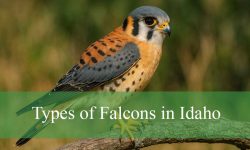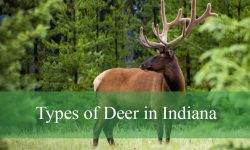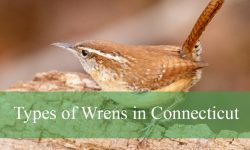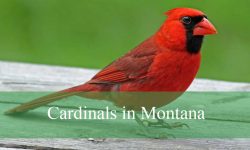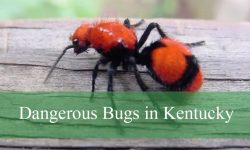Massachusetts is one of the best states in New England to spot a wide variety of hawks. From forest-dwelling species to open-country hunters, these birds of prey can be found soaring across the state’s skies throughout the year. Their presence reflects the rich diversity of habitats—from mountain ridges to coastal plains—that make Massachusetts ideal for raptors.
Each hawk species has its own story, behavior, and preferred environment. Some, like the Red-tailed Hawk, are permanent residents commonly seen along highways, while others, such as the Broad-winged Hawk, migrate in massive flocks during spring and fall. Their impressive flight patterns and sharp hunting skills make them some of the most admired birds in the region.
In this guide, you’ll discover 10 types of hawks found in Massachusetts, complete with identification details, habitat insights, and the best times to see them.
Different Types of Hawks Found in Massachusetts
Red-tailed Hawk (Buteo jamaicensis)
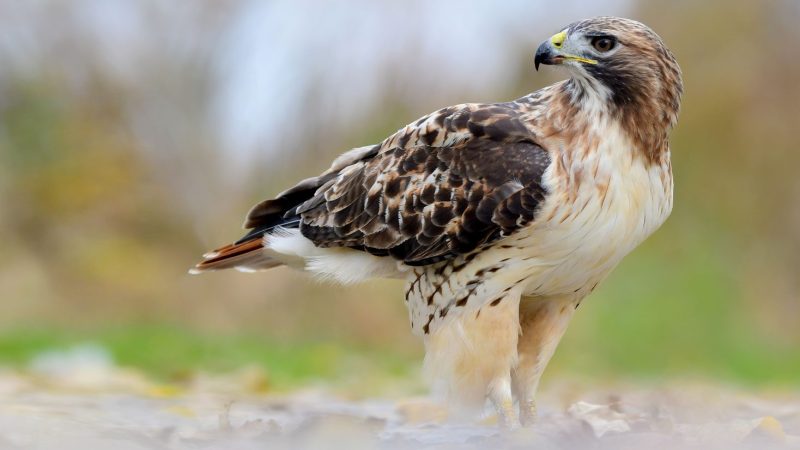
The Red-tailed Hawk is a large and powerful bird of prey, measuring about 18 to 26 inches in length with a wingspan that can reach up to 4 feet. Adults typically weigh between 1.5 and 3.5 pounds, with females being noticeably larger than males. Their plumage varies slightly across individuals but generally features a rich brown back, pale underparts, and the trademark brick-red tail that gives the species its name. Juveniles can be identified by their banded brown tails and more streaked underbellies until they mature in about two years.
In terms of identification, Red-tailed Hawks are recognized by their broad, rounded wings and short, wide tails, which make them well-adapted for soaring. When gliding, their wings form a shallow “V” shape, and they often hover in place while scanning the ground for prey. Their call is a distinctive, hoarse “kee-eeeer” scream that echoes across open landscapes, often used in movies to represent any raptor’s cry. This sound is one of the most iconic in North American wildlife, easily distinguishable in the wild.
Behaviorally, Red-tailed Hawks are versatile hunters with keen eyesight capable of spotting small animals from over 100 feet in the air. Their diet mainly includes small mammals such as mice, voles, rabbits, and squirrels, though they occasionally prey on birds and reptiles. They are often seen perched along highways, using signposts, trees, or power poles as vantage points to ambush prey. During the breeding season, they perform elaborate aerial displays, circling together and diving in sweeping patterns as part of courtship.
Red-tailed Hawks are year-round residents in Massachusetts and thrive in a wide variety of habitats. They prefer open areas with scattered trees such as farmlands, grasslands, and forest edges but have also adapted well to suburban and even urban environments. They build large stick nests high in trees or on cliff ledges, reusing and expanding them each year. Their adaptability and broad diet make them one of the most successful raptors in North America, ensuring their constant presence across the Massachusetts landscape.
Red-shouldered Hawk (Buteo lineatus)
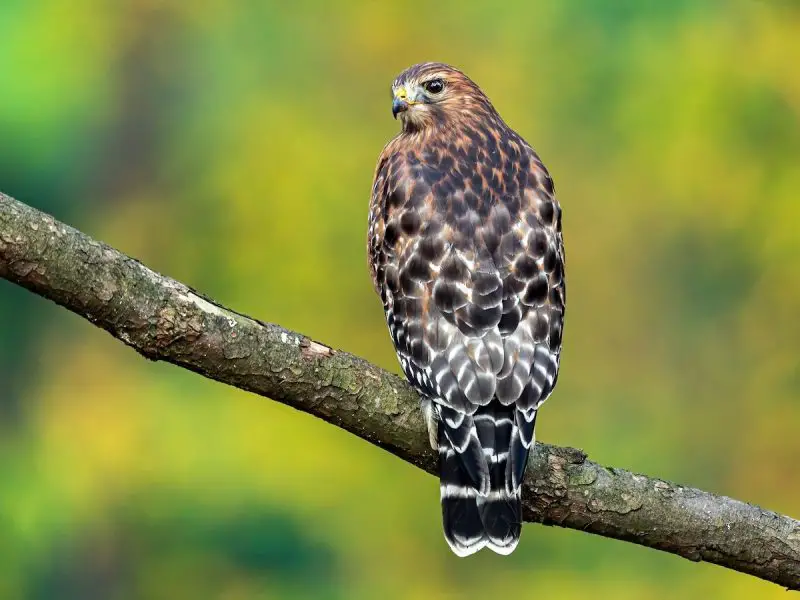
The Red-shouldered Hawk is a medium-sized raptor, measuring about 17 to 24 inches long with a wingspan between 37 and 43 inches. Adults typically weigh around 1 to 2 pounds, with females again slightly larger than males. They are visually striking, featuring rich reddish barring on the chest, black-and-white checkered wings, and a tail with several narrow white bands. When seen in flight, one of the most distinctive features is the pale, crescent-shaped “windows” near the wingtips, which catch the light and help with quick identification in the sky.
In terms of appearance and behavior, the Red-shouldered Hawk stands out from other Buteos due to its slender body and long tail, which aid in agile flight through dense forests. Its call—a loud, repeated “kee-aah” scream—often gives away its presence long before it is seen, echoing through wooded valleys and river bottoms. They are known to be territorial and will vigorously defend their nesting area, especially during breeding season. During courtship, pairs engage in impressive aerial displays, flying high in circles and diving sharply together before locking talons momentarily.
These hawks primarily hunt small mammals, amphibians, and reptiles, making them frequent predators of frogs, snakes, and field mice. They rely on stealth, often perching quietly beneath the forest canopy before swooping down to seize their prey with precision. Red-shouldered Hawks are opportunistic and will also hunt small birds or insects when food is scarce. Their hunting style is methodical and patient, preferring wooded habitats where they can use cover to their advantage rather than open-air soaring.
In Massachusetts, Red-shouldered Hawks are considered partial residents. Populations in the southern and coastal areas often stay through the winter, while northern birds migrate to warmer regions. They favor mature deciduous and mixed forests, especially near rivers, swamps, or floodplains where prey is abundant. Nests are built high in large trees, typically made of sticks and lined with green leaves or bark. With conservation efforts protecting forested wetlands, their numbers have been gradually increasing across Massachusetts, making sightings more common in suitable habitats.
Broad-winged Hawk (Buteo platypterus)
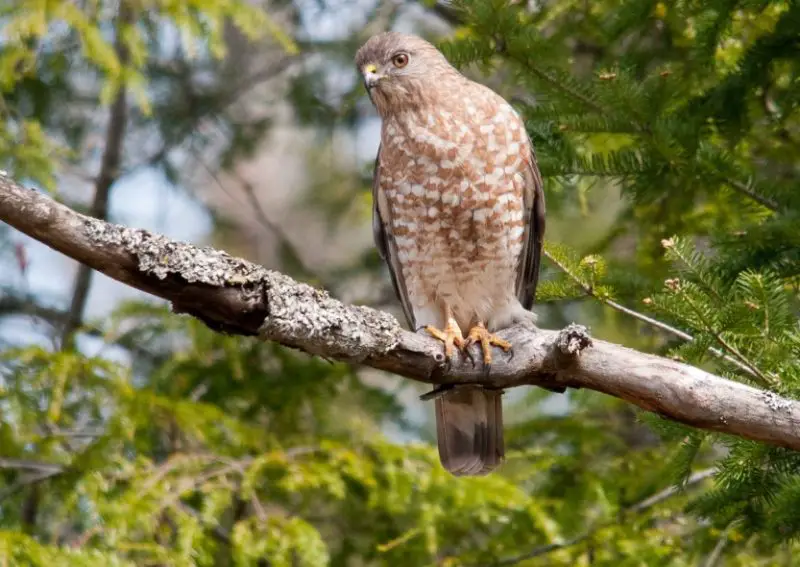
The Broad-winged Hawk is a small but sturdy raptor, measuring around 13 to 17 inches in length with a wingspan of about 32 to 39 inches. It typically weighs between 9 and 20 ounces, making it one of the more compact members of the Buteo family. Adults have rich brown upperparts, a pale underbody with horizontal barring on the chest, and a short, broad tail marked by two or three distinctive white bands. In flight, their broad wings and square-shaped tails make them easy to distinguish, especially when seen circling in groups high above forests.
In appearance and flight, the Broad-winged Hawk is a true master of the thermals. During the breeding season, they stay mostly hidden within forest interiors, but in fall, they become spectacularly visible as they migrate south in massive flocks known as kettles—sometimes numbering thousands of birds. Their clear, whistled call, sounding like a high-pitched “peee-eee,” can often be heard echoing through wooded areas during spring and early summer. They are agile fliers but prefer short bursts of pursuit rather than long aerial chases, relying instead on stealth and patience.
Their diet consists mainly of small mammals, amphibians, reptiles, and insects. They often hunt from low perches, watching for movement before diving swiftly to capture prey on the forest floor. Frogs, snakes, and mice make up a significant portion of their meals, particularly during breeding months when they must feed hungry nestlings. Both parents share responsibility for raising the young, with the female incubating eggs and the male providing food during that period.
In Massachusetts, Broad-winged Hawks are summer residents, arriving in late April and departing by September. They breed in mixed and deciduous forests, often choosing secluded nesting sites high in trees near water. These hawks are especially active in the Berkshires and central Massachusetts, where large tracts of forest remain. During migration, they can be spotted soaring high above ridges and mountain lookouts, particularly in September when the southward movement peaks.
Cooper’s Hawk (Accipiter cooperii)
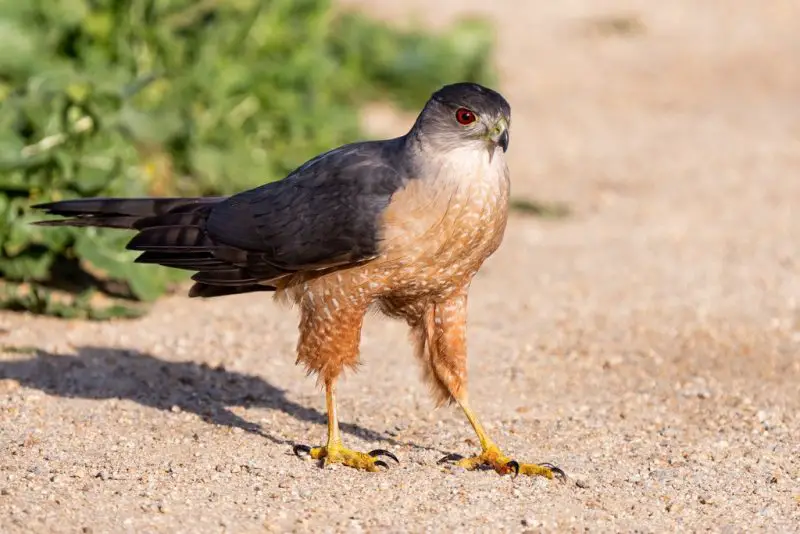
The Cooper’s Hawk is a medium-sized raptor, typically measuring 14 to 20 inches in length with a wingspan between 24 and 36 inches. Adults weigh about 11 to 24 ounces, with females noticeably larger than males. They are sleek and athletic, featuring a long, rounded tail with dark bands, blue-gray upperparts, and a finely barred reddish chest. Their sharp, hooked beak and piercing red eyes (which are yellow in juveniles) add to their fierce and focused appearance, signaling their role as skillful bird hunters.
In flight, Cooper’s Hawks are exceptionally agile, using their short, broad wings and long tails to weave swiftly through trees. They are often confused with Sharp-shinned Hawks, but Cooper’s Hawks appear bulkier with a larger head that projects farther beyond the wings in flight. Their flight pattern alternates between rapid wingbeats and short glides, allowing them to surprise prey. Their hunting strategy involves ambush—swooping down suddenly to catch smaller birds, often near feeders or wooded clearings.
These hawks are opportunistic predators, feeding primarily on songbirds such as doves, robins, and starlings, though they occasionally hunt small mammals and reptiles. They use stealth and speed rather than high-altitude soaring, often hugging the treetops or darting through dense foliage in pursuit of prey. Cooper’s Hawks are known to visit suburban neighborhoods where bird feeders attract their targets, earning them a reputation as the “backyard hawk.” During the breeding season, they construct stick nests in tall trees and fiercely defend their territory against intruders.
In Massachusetts, Cooper’s Hawks are year-round residents found throughout the state. They thrive in mixed forests, woodlots, and increasingly in urban and suburban areas where they have adapted well to human presence. Their population has grown steadily over the past decades, thanks to legal protection and increased forest cover. Whether in deep woodlands or city parks, Cooper’s Hawks remain a thrilling sight for birdwatchers, symbolizing the balance between wilderness and urban coexistence.
Sharp-shinned Hawk (Accipiter striatus)
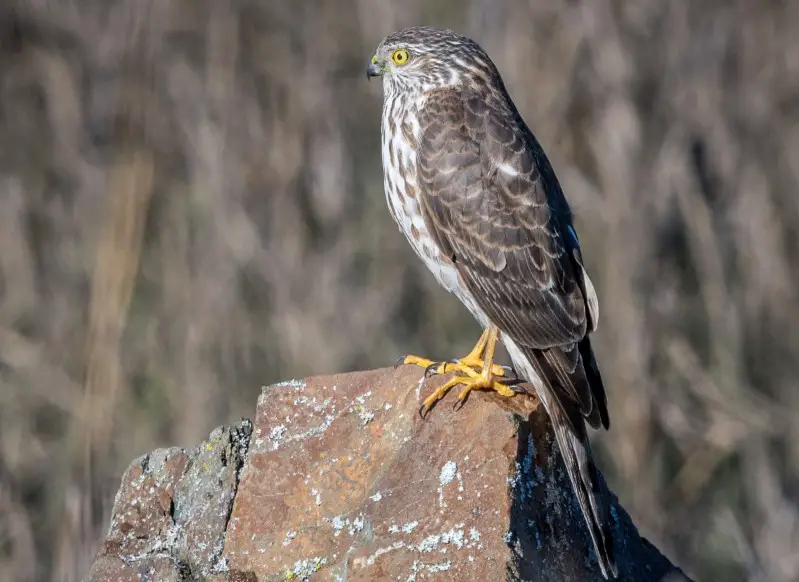
The Sharp-shinned Hawk is the smallest hawk species in North America, typically measuring 9 to 13 inches in length with a wingspan ranging from 17 to 22 inches. Despite its small size—males weighing around 3 to 4 ounces and females nearly twice that—it is a fierce and efficient predator. Adults have blue-gray upperparts, a reddish-orange barred chest, and long, narrow legs that make them agile hunters. Juveniles display brown upperparts and streaked underbellies, which help them blend into forested environments during their early life stages.
These hawks are expert fliers, equipped with short, rounded wings and a long, square-tipped tail that provides remarkable maneuverability through dense woodlands. Their flight pattern is rapid and erratic, alternating between several quick wingbeats and short glides. The Sharp-shinned Hawk is often mistaken for its larger relative, the Cooper’s Hawk, but can be distinguished by its smaller head, thinner legs, and squared tail. They are secretive and elusive, often seen darting through trees or suddenly appearing near backyard bird feeders in pursuit of prey.
Feeding primarily on small birds such as sparrows, finches, and warblers, the Sharp-shinned Hawk relies on speed, surprise, and cover. It ambushes its prey from low perches or while flying swiftly through wooded areas. Occasionally, it supplements its diet with small mammals or insects. During migration, these hawks can be observed in large numbers, particularly along coastal ridges and mountain ranges, where they take advantage of thermal currents to travel long distances.
In Massachusetts, Sharp-shinned Hawks breed mainly in the northern parts of the state, favoring coniferous and mixed forests. They are most visible during migration in spring and fall, when thousands pass through the region. Some individuals remain through winter, especially in the southern coastal areas where food is more abundant. Although they are shy and often hidden, patient observers can sometimes spot them darting through suburban neighborhoods or forest edges in search of prey.
Northern Harrier (Circus hudsonius)
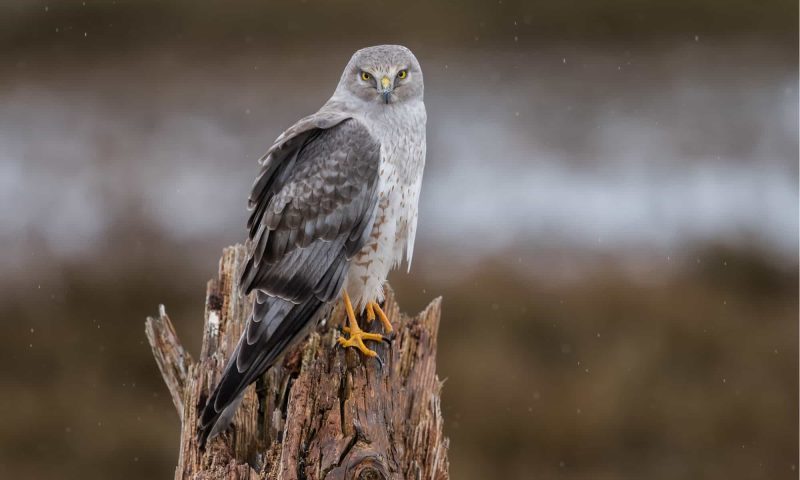
The Northern Harrier is a medium-sized raptor, measuring about 18 to 22 inches long with an impressive wingspan of 40 to 48 inches. Its slim body, long tail, and owl-like facial disk give it a unique appearance among hawks. Males, often called “Gray Ghosts,” have soft gray plumage and black wingtips, while females and juveniles are brown with streaked underparts. The most distinctive feature of this species is the bright white rump patch visible during flight, making identification easy even from a distance.
Unlike most hawks, the Northern Harrier relies heavily on both sight and hearing to hunt, aided by its facial disk that channels sound toward its ears. It flies low over grasslands, marshes, and meadows, gliding gracefully just above the ground while listening and watching for movement. This low, buoyant flight style, combined with occasional hovering, makes it one of the most elegant raptors to observe. When prey such as voles, mice, small birds, or reptiles is detected, the harrier quickly swoops down with remarkable precision.
Behaviorally, Northern Harriers are solitary and territorial during the breeding season but may be seen in small groups during migration or winter. They often perch on fence posts or low shrubs to scan their surroundings. Males are known for polygyny, sometimes pairing with multiple females in a single season. Their nests are built on the ground, hidden in tall grasses or reeds, and lined with plant material for insulation. Both parents participate in raising the young, although the female handles most of the brooding.
In Massachusetts, Northern Harriers can be observed year-round, particularly along coastal regions and large inland wetlands. They are most abundant during winter and migration periods, with notable populations found in areas like Plum Island, Cape Cod, and the Parker River National Wildlife Refuge. These open landscapes provide ideal conditions for their hunting style. Although their populations have declined due to habitat loss, conservation of grasslands and marshes continues to support their presence throughout the state.
Rough-legged Hawk (Buteo lagopus)
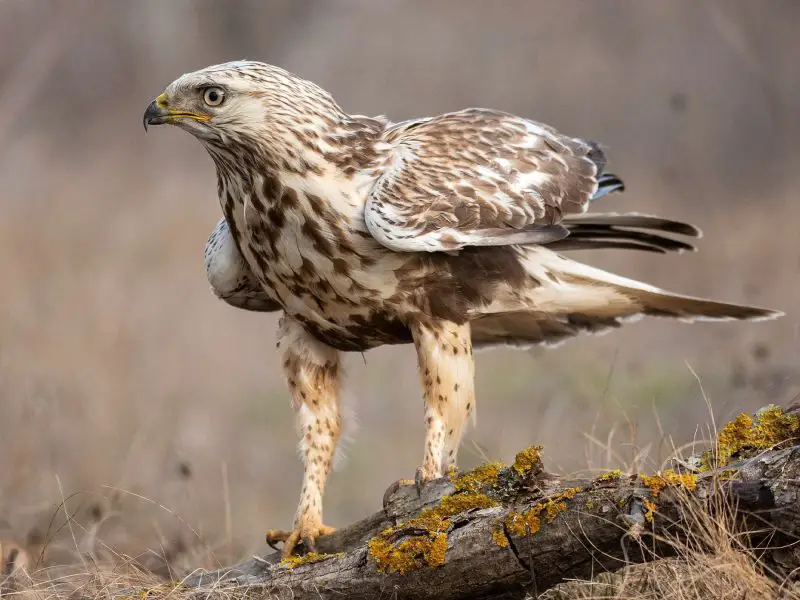
The Rough-legged Hawk is a large raptor adapted to cold northern climates, measuring about 18 to 24 inches in length with a wingspan between 47 and 60 inches. It weighs roughly 1.5 to 3 pounds, with females again larger than males. This species gets its name from the feathers that extend all the way down its legs—a unique feature among hawks that helps it stay warm in Arctic conditions. Rough-legged Hawks occur in both light and dark morphs; light morphs display pale underparts with dark belly bands and wrist patches, while dark morphs are mostly brown with lighter flight feathers.
These hawks are masters of open skies, with broad wings and long tails ideal for hovering and gliding over flat terrain. They can often be seen facing into the wind, holding their position as they scan the ground below for prey—a behavior rarely seen in other Buteos. Their flight is smooth and buoyant, with deep wingbeats that make them appear almost effortless in the air. The species is also known for its soft, mewing calls, often heard when defending its territory or interacting with mates.
Rough-legged Hawks primarily feed on small mammals, especially voles, lemmings, and mice, which form the bulk of their diet during winter. They may also take small birds or carrion when food is scarce. They prefer open habitats such as tundras, grasslands, and coastal marshes, where they perch on fence posts or low trees to watch for movement. Their hunting method involves either soaring over open fields or hovering before diving onto unsuspecting prey with powerful talons.
In Massachusetts, the Rough-legged Hawk is a winter visitor, arriving from the Arctic tundra around November and departing by March. They are commonly spotted in open areas like coastal dunes, agricultural lands, and marshes—particularly in Essex County and along the North Shore. Their seasonal appearance adds a special excitement for birdwatchers during the colder months. Once spring approaches, these hardy hawks migrate north again to breed in the treeless Arctic, where they raise their young under the endless daylight of summer.
Northern Goshawk (Accipiter gentilis)
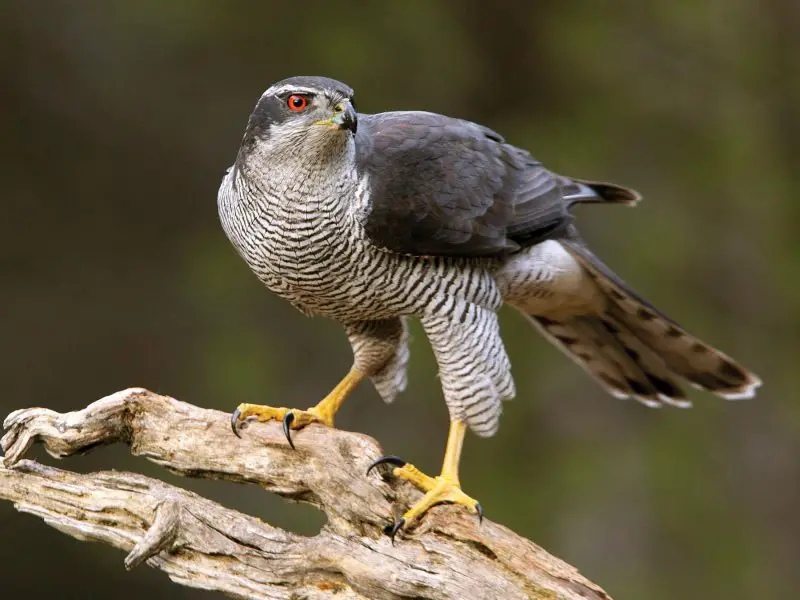
The Northern Goshawk is a large and formidable forest hawk, measuring between 20 and 26 inches in length with a wingspan of 40 to 46 inches. It is the largest member of the Accipiter genus, noticeably bigger than both the Cooper’s and Sharp-shinned Hawks. Adults display slate-gray upperparts, a finely barred gray-and-white chest, and striking red eyes that intensify with age. Their broad wings and long tail are perfectly adapted for agile maneuvering through dense trees, allowing them to chase prey with incredible precision. Juveniles can be recognized by their brown upperparts and heavily streaked underbellies.
This species is known for its secretive and aggressive behavior, particularly during the breeding season when it defends its nesting territory with fierce determination. The Northern Goshawk’s powerful build and long tail enable it to accelerate rapidly and twist through tight spaces, pursuing prey in wooded environments. Its flight is fast and direct, with deep wingbeats followed by short glides. Its call is a sharp, repeated “kak-kak-kak,” which often echoes through remote forests, especially during nesting season.
As a predator, the Northern Goshawk has a diverse diet that includes squirrels, crows, pigeons, rabbits, and grouse. It hunts primarily by surprise, using the forest canopy as cover before launching swift attacks. Unlike soaring hawks that patrol open skies, the goshawk relies on stealth and speed within thick woodland habitats. Its strength allows it to take down prey larger than itself, and it often caches excess food near the nest during breeding season to ensure a steady food supply for its young.
In Massachusetts, Northern Goshawks are considered rare and elusive residents. They prefer large tracts of mature forest, particularly in the western and central parts of the state such as the Berkshire Hills. Although sightings are infrequent, these raptors can be found year-round, nesting in secluded coniferous forests. Their population has declined in some areas due to habitat loss and human disturbance, but conservation of old-growth forests remains key to supporting this magnificent woodland hunter.
Swainson’s Hawk (Buteo swainsoni)
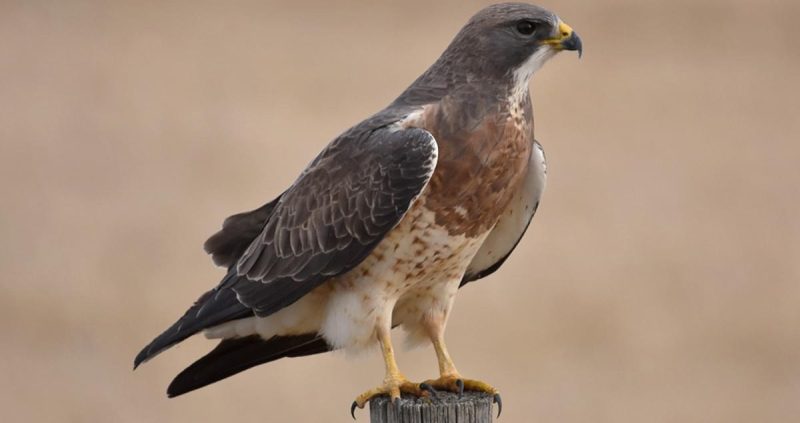
The Swainson’s Hawk is a medium-to-large raptor measuring about 19 to 22 inches in length, with a wingspan of 46 to 54 inches. This species is recognized by its long, pointed wings and distinct plumage pattern: adults typically have a dark chest and a contrasting pale belly, with a grayish-brown back and reddish shoulders. In flight, their wings show dark flight feathers that create a two-toned appearance. These features, combined with their slim bodies and long tails, make them efficient long-distance migrants capable of covering thousands of miles.
This hawk is primarily a bird of the western grasslands but occasionally appears in Massachusetts as a rare visitor during migration. Its flight is buoyant and graceful, often seen circling high in thermals during its transcontinental journey to and from South America. Swainson’s Hawks migrate in massive flocks known as kettles, sometimes numbering in the thousands, making their movement one of the most impressive migrations of any raptor species. In Massachusetts, however, they are seen only sporadically, often as isolated individuals that have strayed from their usual routes.
Swainson’s Hawks are opportunistic feeders whose diet changes with the seasons. During the breeding season, they primarily hunt small mammals such as ground squirrels and rabbits, but during migration, they switch almost entirely to insects, especially grasshoppers and dragonflies. They often follow agricultural activity, soaring over plowed fields where insects are plentiful. This dietary flexibility is key to their survival over vast migration distances, spanning from the western United States to the pampas of Argentina.
Sightings of Swainson’s Hawks in Massachusetts are rare and typically occur in open habitats such as coastal plains, farmlands, and grasslands during the fall migration period. These appearances are considered accidental, as the species’ normal range lies far to the west. Birdwatchers lucky enough to spot one usually find them gliding over open country in search of insects. Their occasional presence adds a touch of the western plains to the skies of New England, offering a special treat for dedicated raptor enthusiasts.
Ferruginous Hawk (Buteo regalis)
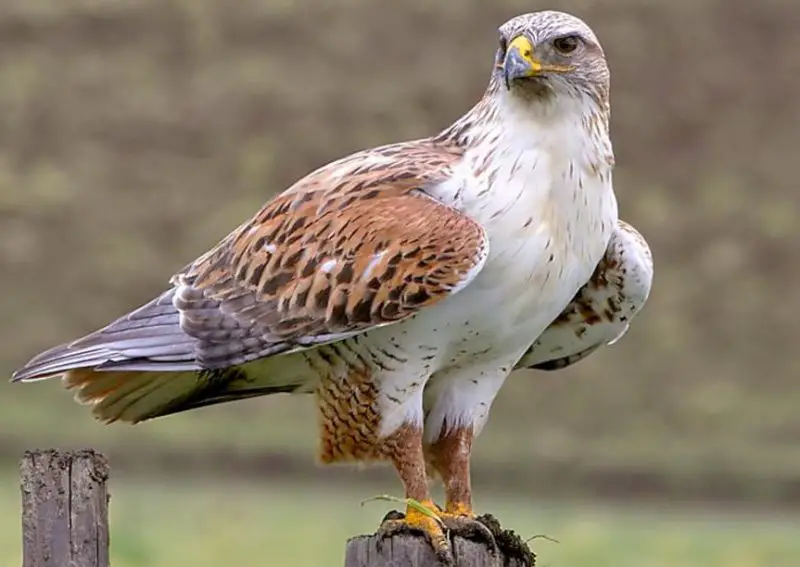
The Ferruginous Hawk is the largest hawk in North America, measuring 22 to 27 inches long with an impressive wingspan of 53 to 56 inches. It weighs between 2 and 4 pounds, making it nearly the size of a small eagle. Its name comes from its rusty, “ferruginous” coloring on the legs, back, and shoulders. Light-morph individuals have pale underparts and rufous markings across the wings, while dark morphs are mostly chocolate brown with lighter flight feathers. Their large heads, broad wings, and feathered legs distinguish them from other Buteo species.
In flight, Ferruginous Hawks are powerful and elegant, soaring with slightly raised wings in wide circles over open country. They prefer vast, treeless landscapes and are known for their calm, steady flight. When perched, they can be identified by their long, feather-covered legs—a feature they share with the Rough-legged Hawk. Their call is a low, rasping sound, often heard when they are disturbed or near the nest. Despite their size, they are gentle and non-aggressive compared to other large raptors.
These hawks are primarily hunters of small mammals such as rabbits, prairie dogs, and ground squirrels. They rely on keen eyesight and open terrain to spot movement from high above. Unlike woodland hawks, Ferruginous Hawks rarely hunt in flight; instead, they often perch on the ground or low mounds before launching a rapid strike. During migration or in winter, they may also scavenge carrion or hunt birds when necessary. Their nesting sites are typically on cliffs, trees, or even on the ground in open areas, using large stick nests reused and expanded each year.
The Ferruginous Hawk is an extremely rare visitor to Massachusetts, considered an accidental species that appears only during unusual weather patterns or migratory disruptions. It is native to the open plains and deserts of the western United States and Canada, far from New England’s forests. When it does occur in Massachusetts, sightings are usually along coastal plains or agricultural fields, especially after strong storm systems push western migrants eastward. Spotting one is a remarkable event for birders—a reminder of the incredible distances and unpredictability of raptor migration.
Best Time to See Hawks in Massachusetts
The best time to see hawks in Massachusetts is during their migration seasons, particularly in spring (April–May) and fall (September–October), when thousands of raptors travel through the state’s skies. During these months, both resident and migratory species take advantage of thermal air currents to soar long distances with minimal effort. In spring, hawks move northward to their breeding territories across New England and Canada, while in fall they head south toward warmer climates in the southern U.S., Central America, or even South America. This biannual spectacle, known as a “hawk migration,” is one of the most breathtaking natural events for birdwatchers in the region.
During spring migration, observers can witness species such as the Broad-winged Hawk, Sharp-shinned Hawk, Red-tailed Hawk, and Osprey traveling north in small groups or solitary flight. These movements tend to be more dispersed, with fewer large flocks, as hawks follow favorable winds and thermal patterns. Early mornings on clear, sunny days following a night of southerly winds are often ideal conditions for spotting raptors riding thermals upward before gliding northward. In Massachusetts, the first significant wave of hawk movement usually begins in early April and peaks around late May.
The fall migration is even more dramatic and concentrated, attracting birdwatchers from across New England. From mid-September through late October, thousands of hawks—especially Broad-winged Hawks—gather into swirling flocks known as “kettles”, sometimes numbering in the hundreds or even thousands. These kettles form as hawks take advantage of warm updrafts rising from the land, helping them conserve energy during their long southward journey. Peak migration for Broad-winged Hawks typically occurs between September 10th and 25th, but other species such as Sharp-shinned Hawks, Cooper’s Hawks, and Northern Harriers continue moving through into late October.
Massachusetts offers several prime hawk-watching locations where both beginners and experienced birders can enjoy this spectacle. Mount Tom State Reservation in Holyoke and Wachusett Mountain State Reservation in Princeton are two of the most famous inland sites, providing elevated vantage points that overlook major raptor flyways. Along the coast, Plum Island and the Parker River National Wildlife Refuge are excellent for spotting migrating hawks, falcons, and eagles as they follow the shoreline. Other notable spots include Mount Watatic in Ashburnham and Blue Hills Reservation near Boston, both known for reliable sightings and experienced local birding communities.
FAQs About Hawks in Massachusetts
Are hawks protected in Massachusetts?
Yes. All hawks are protected under the Migratory Bird Treaty Act, making it illegal to harm, capture, or disturb them or their nests.
Where can I see hawks in Massachusetts?
You can find hawks in a variety of habitats, from coastal marshes and forests to farmlands and suburbs. Top birding areas include Cape Cod National Seashore, Blue Hills Reservation, and Mount Wachusett.
Do hawks migrate out of Massachusetts?
Some species, like the Broad-winged and Rough-legged Hawks, are migratory, while others—such as Red-tailed and Cooper’s Hawks—stay year-round.

